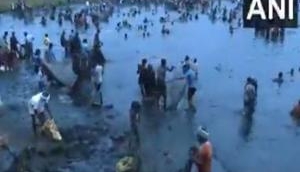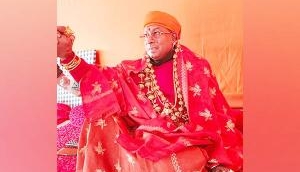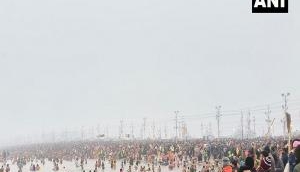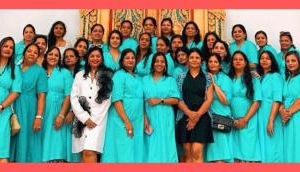Cheering a draw: Indian Army plans to celebrate 1965 'victory' over Pakistan

The celebration
- There is a proposal to celebrate 50 years of the 1965 war with Pakistan, even though it wasn\'t a clear victory.
- The celebrations are planned for end August, early September in Rajpath. The scale is unprecedented.
- Replicas of tanks and other weaponry will be on display across Delhi. Major Indian battle victories will be celebrated.
The debate
- Pakistan attacked India in 1965 believing that India was vulnerable after the losses in the 1962 war with China.
- By most accounts, neither side won an outright victory.
- Indian veterans of the war cite successes such as the opening up of the Lahore and Sialkot sectors to claim that it was a victory.
The politics
- This could be Narendra Modi government\'s attempt to appropriate Lal Bahadur Shastri\'s legacy the way it appropriated Sardar Patel.
- Shastri\'s Jai Jawan Jai Kisan speech during the 1965 war will be broadcast at several places.
Exactly 50 years after India and Pakistan fought their second war over Kashmir, in 1965, the Indian Army is likely to commemorate its victory in a month-long celebration, in the capital.
According to sources, celebrations will include displaying tableaux, hosting cultural shows, exhibitions and dance dramas and film shows, over a month.
The army will also celebrate the important individual battles of the 1965 war including - Haji Pir Pass (in Jammu and Kashmir which was captured by Pakistani forces and freed by Indian soldiers), Khem Karan (in Punjab, site of a tank battle, won by India), Chamb (in J&K where Indian forces bravely resisted a Pakistani offensive), Burki (a town near Lahore which was captured by Indian forces with help of their armoured division), Phillora (near Sialkot, Pakistan, the site of one of the biggest Indo-Pak tank battles), Asal Uttar (in Punjab, where another tank battle was fought and won by India).
According to the proposal, most of these celebrations will be held at Rajpath sometime in late August or early September. Replicas of Indian tanks and aircraft will be put up in areas like Connaught Place.
Sources also say that Prime Minister Lal Bahadur Shastri's rousing speech at Ramlila Maidan, which gave India the famous slogan 'Jai Jawan, Jai Kisan', will also be played and broadcast at several places in the capital.
Some officials compare the scale of the proposed celebrations, which is awaiting final authorisation, to the 26 January Republic Day parade.
The history
While there may be disputes about who finished with greater glories, there is broad consensus about the events leading up to the war, including Pakistan's twin operations - Gibraltar and Grand Slam.
The military president of Pakistan, Ayub Khan was keen to capture Kashmir before India could recuperate from the heavy losses in its war fought three years ago with China.
He chose to do it 1965, when Pakistan had just received advanced battle tanks and fighter jets from its western allies, while India was still in process of upgrading its arguably inferior military hardware.
By celebrating the 1965 war, the Modi government could be trying to appropriate Lal Bahadur Shastri's legacy
Pakistan's first move, which didn't work as planned, was to divert attention away from Kashmir by invading the Rann of Kutch. In August that year it sent infiltrators to Kashmir hoping that the people of the state would rise in its favour. This was Operation Gibraltar, named after the famous port in Europe where Muslim invaders first entered Spain.
Locals, instead gave information of the infiltrators to units of the Indian Army, based on which army pushed the infiltrators back aggressively and the operation failed. Pakistan then decided to launch a full scale attack on Jammu and Kashmir, codenamed Operation Grand Slam. This was the beginning of the war.
Eyewitness accounts
The '65 war was the first war involving the Indian Air Force. For the first time air battles were held between the two arch rivals.
Wing Commander (retd) Jag Mohan Nath, Juggy Nath for his peers, is the first soldier in Indian armed forces to have received the Maha Vir Chakra (MVC) twice. It still is a rare distinction. He received his first MVC for flying his Canberra bomber aircraft over Aksai Chin capturing on camera the Chinese troop build up.
He repeated the feat in 1965 war as the Flight Commander with the Strategic Photo Reconnaissance Squadron, through the reconnaissance missions deep into Pakistan, capturing Pakistani troop movement and coordinates of their vital military installations, based on which the Indian attack was planned.
"I used to make sorties over the border in Pakistan and click photographs of military formations there, through extremely high resolution cameras fixed on board. Sometimes we flew at great heights where Pakistani fighter aircraft couldn't reach, and sometimes we had to fly at tree-top level to avoid radars."
Colonel (retd) Kirit Joshipura was a Major with the Bombay Engineer Group, or Bombay Sappers as they're informally known. He was posted in the Chamb sector, in Jammu, when Pakistan forces launched their assault.
"It was 1 August, I remember. Some skirmishes had been happening earlier but sudden Pakistani assault forced us to retreat till as far back as Akhnoor. We lost our Brigade Commander in the assault. But once we pushed them back and opened up Sialkot and Lahore sectors, there was no going back."
Who actually won?
Opinions on who actually won the war are quite different. Take for instance the front page headline of The Australian on 14 September 1965 - 'Pakistani Victory', the strap-line reads, 'Biggest tank battle since World War II'. In contrast, TIME in reporting the war talked about how Pakistan didn't fare very well and 'India, by contrast, is still the big gainer in the war.'
A clear Indian victory is also not given in an official study of the 1965 war written and edited by military historians, in 1992, available in the records of the History Division, Department of Defence. "The performance of Indian armed forces was equally if not more unimpressive," says the study.
It goes on: "Although in military terms the contest was a draw, it should be noted that in the overall context it was a clear victory for India."
On paper at least, when Tashkent peace treaty was signed and both forces withdrew to positions as on 5 August 1965, India seems to have been far ahead. At the end of the war, India had captured 1,920 square kilometres of Pakistani territory, against the loss of 550 sq km of its own territory. Around 3,200 Indian soldiers were martyred in the war compared to 3,800 from Pakistan.
The '65 war was the first war involving the Indian Air Force
'What was won on the battlefield was given up at the negotiating table,' commented I Ramamohan Rao, former Principal Information Officer to the Government of India, in a recent piece. He was a public relations officer in the ministry of defence during the war.
Colonel Joshipura agrees, "We lose on the tables what we win in the fields." He has no doubts that India had successfully crushed Pakistan in 1965 in an outright military victory.
"We were sitting outside Lahore, controlling the airports. Even Americans had to seek our permission before landing in Pakistan. We could have cut water supplies whenever we wanted. How was it not an Indian victory."
A deft political move?
Since India did not come out clearly as the winner of the 1965 war, the proposal to celebrate its victory seems intriguing.
Celebrating the 1965 victory could be an attempt to beat the drums of nationalism something that the Modi government has constantly identified with. It could also be subtle attempt to appropriate the legacy of Lal Bahadur Shastri.
RSS chief Mohan Bhagwat has recently lavished praise on the former prime minister, saying, "Only personalities like Shastri can keep shining like a bright sun in Indian politics."
The BJP has earlier been accused of trying to 'appropriate' some leading Congress leaders like Vallabhbhai Patel and Madan Mohan Malaviya.
The final authorisation of the proposal is still awaited. In its approved form, the initial proposal may be altered, but it will still be interesting to observe political overtones in the celebrations, if there are any.
First published: 20 June 2015, 22:03 IST






![BJP's Kapil Mishra recreates Shankar Mahadevan’s ‘Breathless’ song to highlight Delhi pollution [WATCH] BJP's Kapil Mishra recreates Shankar Mahadevan’s ‘Breathless’ song to highlight Delhi pollution [WATCH]](https://images.catchnews.com/upload/2022/11/03/kapil-mishra_240884_300x172.png)

![Anupam Kher shares pictures of his toned body on 67th birthday [MUST SEE] Anupam Kher shares pictures of his toned body on 67th birthday [MUST SEE]](https://images.catchnews.com/upload/2022/03/07/Anupam_kher_231145_300x172.jpg)






